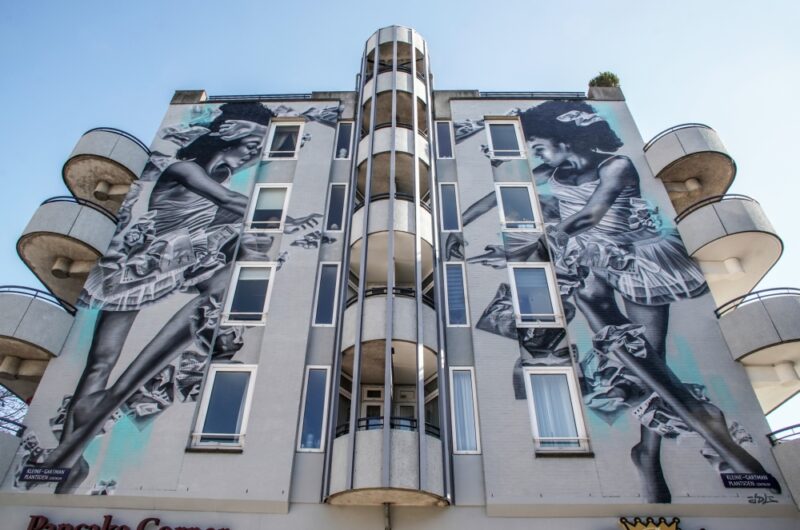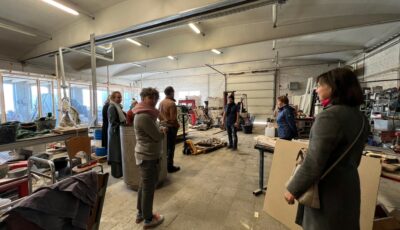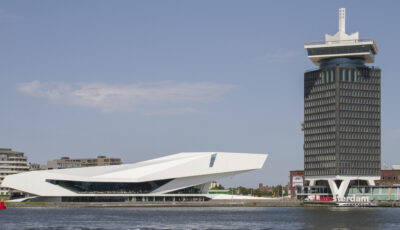 Foto Gemeente Amsterdam
Foto Gemeente Amsterdam 18 May 2021
Exploring cultural wishes and needs
Talking about diversity and inclusion, we discussed the meaning of those terms. An important discussion that needs to be held in order for the municipality to recognize Talking about diversity and inclusion, we discussed the meaning of those terms. An important discussion that needs to be held in order for the municipality to recognize
How can we support the development of cultural infrastructure? And how can we involve local residents and stakeholders? Amsterdam’s second ULG meeting on the 21st of April was about every district’s focus questions for the ACCESS project. Amsterdam wants to focus on enabling, securing and developing culture in the peripheral districts Noord, Nieuw-West and Zuidoost. We talked about what’s going on in the districts, the challenges they encounter and what they want to focus on. We want to ensure the sustainability of our work and make sure that no one feels excluded from the cultural sector in Amsterdam.
Amsterdam Nieuw-West
The district of Nieuw-West has set five goals for arts and culture.
- To enhance the livability of the neighborhoods through art and culture, which could contribute to dialogues, meetings and diversity
- To enhance cultural participation
- To realize a suiting cultural infrastructure
- To stimulate youth culture and boost the development of talent
- To offer new space, opportunities and possibilities to creators from Nieuw-West
The specific target question for ACCES in order to realize a more inclusive offer of arts and culture is: What are the cultural wishes and needs of the inhabitants, at neighborhood- and district level.
Amsterdam Noord
The fist ambition of Noord is to make all art and culture accessible for everyone. That is why they are working on a cultural map that is rooted in neighbourhood-level in the district. This means prioritizing the local residents, and less focus on the expansion of the city centre to the north. Give the lead to existing initiatives and institutions from Noord. Local social groups are essential for the success and the support of the cultural policy. It is imperative that they are and feel involved in the process. Many cultural institutions are bundled in the Cultuurtafel (culture table), and one of their messages is, with reference to the late Dutch folksinger Ramses Shaffy, ‘niet zonder ons’ (Not without us).
Amsterdam Zuidoost
Zuidoost plays an important role in realizing inclusion and diversity in Amsterdam and would like to share the experience and expertise on the area of diverse and multicultural organization and programming with the rest of Amsterdam. Zuidoost already reinforces local art initiatives, supporting art and cultural organizations with subsidy; strengthens financial power of art and cultural professionals; enhances cultural education in Zuidoost; uses local identities as branding; promotes arts and culture to reach locals and tourists; sustains successes of previous events; and strengthens the position of arts in public spaces.
What Zuidoost tries to do, is to sit down with the cultural field and let them lead the conversation, in order to see which challenges need attention. Keep the conversation going, even despite the corona lockdown. It is about the visibility of the institutions and the makers for the visitors and the cultural partners in the city. How do we secure this visibility, how can we collaborate? Do the cultural partners know enough of Zuidoost and their potentials? Our ambition is to assemble a cultural product for Amsterdam of which everyone can be proud.
Q&A
Talking about diversity and inclusion, we discussed the meaning of those terms. An important discussion that needs to be held in order for the municipality to recognize the initiatives that are already going on in the districts. What do we mean with culture, with inclusion and diversity? And what does it mean to include local residents to this process? Inclusion and diversity is about sharing power, but the reality is that the traditional power structures still exist. How can we ensure their mandate and really include them? In other words, how do we transform these good intentions into good results? With this valuable and critical note in the back of our heads, we now look towards the next meeting, where the SSAs will be composed.
On towards the next meeting, where the SSAs will be composed.


